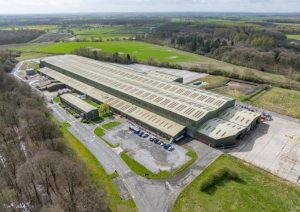Advanced Solutions Shaping Modern Rail Infrastructure

Modern rail infrastructure depends on advanced tools, which keep transport systems efficient and reliable. Certain equipment plays a major role in ensuring that rail networks withstand constant use and heavy loads.
Such innovations help maintain the quality and safety of rail lines. This allows railways to meet increasing demand. They can also uphold high standards for performance and durability.
Enhancing Rail Strength with Flash-Butt Welding Machines
Flash-butt welding machines are critical for rail maintenance. They’re responsible for building strong, continuous rail lines. How do they work? By fusing metal surfaces with heat and pressure. This creates a solid joint. There’s no need for any filler material. This process makes rail installation faster. The end result is a sturdier, more precise connection. This is when compared to traditional methods.
The tech is perfect for high-stress rail environments. It can support long-term durability and lower maintenance needs. Flash-butt welding machines are key to maintaining consistent track integrity. This is vital for safe transport, both for freight and passenger services.
Ensuring Safety with Rail Bend Testing Presses
A rail bend testing press is critical for assessing rail durability. These presses apply stress to rails in controlled settings. They simulate the pressures they will face over time. This process makes sure rails meet strict safety standards. They can catch any weaknesses before installation.
By identifying potential issues in advance, rail bend testing presses support a preventive approach. This confirms that only the strongest materials are used in rail construction. Such testing is fundamental for maintaining the safety and reliability of rail infrastructure. It protects an array of people, including rail operators and passengers.
The Role of Advanced Equipment in Modern Rail Maintenance
These advanced tools reflect a strong commitment to innovation in rail infrastructure. By adopting solutions like the two above, the rail sector can meet rising transport demands. They can also support sustainable, safe operations.
It’s this shift towards smarter rail technology that brings numerous benefits. These include boosting efficiency and reducing costs. Other benefits include improving the overall quality of rail networks. Tools like those we’ve listed are part of a larger move to modernise rail maintenance. This helps railways run smoothly well into the future.
As the rail industry continues to grow, it’s wise to invest in the right equipment. Doing so will make sure networks remain resilient, reliable and ready for whatever comes your way.









